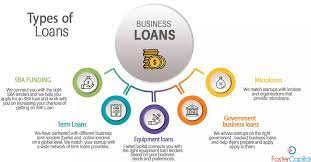Understanding Small Business Loans
Small businesses often require financial assistance to fund their operations, expansion, or unexpected expenses. Small business loans come in various forms, tailored to meet different needs. Two primary categories of these loans are installment and revolving loans. Each type has its distinct characteristics, serving businesses in specific ways.
Installment Loans: A Deeper Look
What are Installment Loans?
Installment loans are a type of business financing where a lump sum amount is borrowed and repaid in fixed, regular installments over a predetermined period. These loans are commonly used for large purchases or specific projects, such as equipment procurement or real estate acquisition. The borrower knows the exact amount they need to repay each month, making budgeting easier.
Features of Installment Loans
Installment loans offer stability and predictability. The key features include:
- Fixed Loan Amount: The borrower receives a fixed amount upfront.
- Fixed Interest Rate: The interest rate remains constant throughout the repayment period.
- Fixed Repayment Schedule: Monthly payments remain consistent, simplifying financial planning.
Revolving Loans: Exploring the Concept
What are Revolving Loans?
Revolving loans, also known as lines of credit, provide businesses with access to a predetermined credit limit. Unlike installment loans, where a lump sum is borrowed, revolving loans allow borrowers to withdraw funds as needed up to the approved limit. As the borrowed amount is repaid, it becomes available for borrowing again.
Features of Revolving Loans
Revolving loans offer flexibility and ongoing access to funds. The features include:
- Variable Borrowing: Borrowers can use as much or as little of the credit line as required.
- Variable Interest: Interest is only charged on the amount borrowed and changes with the outstanding balance.
- Repayment Flexibility: Minimum monthly payments are required, but there’s no fixed repayment schedule.
Comparing Installment and Revolving Loans
Repayment Structure
Installment loans have a fixed repayment structure, making them suitable for projects with defined costs. Revolving loans have more flexibility in repayment, allowing businesses to adjust their payments based on their financial situation.
Flexibility in Borrowing
Revolving loans offer more flexibility in borrowing, allowing businesses to access funds multiple times within the credit limit. Installment loans provide a one-time lump sum, which may be more suitable for specific purchases.
Interest Rates
Installment loans typically have fixed interest rates, providing predictability. Revolving loans have variable rates that can lead to fluctuating interest costs.
Credit Impact
Both types of loans can impact credit. Timely repayments on either loan can positively affect credit scores. However, maxing out a revolving loan might negatively impact credit utilization ratios.
Advantages of Installment Loans
Predictable Payments
Installment loans provide stable monthly payments, making it easier for businesses to budget and manage cash flow.
Building Credit History
Timely repayments on installment loans contribute positively to a business’s credit history and can improve its creditworthiness.
Fixed Interest Rates
Fixed interest rates shield borrowers from fluctuations in the market, ensuring steady repayment amounts.
Benefits of Revolving Loans
Flexible Spending
Revolving loans allow businesses to use funds as needed, which is beneficial for managing variable expenses.
Variable Interest Costs
The interest on revolving loans is tied to the outstanding balance, potentially resulting in lower interest costs when borrowing less.
Continuous Access to Funds
As long as businesses stay within the credit limit and meet minimum payments, they can continuously access funds.
Disadvantages of Installment Loans
Rigidity in Payments
Fixed monthly payments can become burdensome if business revenues fluctuate.
Potentially Higher Rates
Installment loan interest rates might be higher than the initial rates of revolving loans.
Limited Borrowing Flexibility
Once the installment loan is paid off, businesses cannot borrow more from it without applying for a new loan.
Drawbacks of Revolving Loans
Temptation to Overspend
The availability of funds can lead to overspending, especially if businesses lack proper financial discipline.
Fluctuating Interest Rates
Revolving loan interest rates can rise over time, potentially resulting in higher overall borrowing costs.
Minimum Payment Traps
Reliance on minimum payments can lead to a cycle of debt, with interest accruing on the unpaid balance.
Choosing the Right Loan for Your Business
Selecting between installment and revolving loans depends on various factors:
Assessing Financial Needs
Evaluate if you need a lump sum for specific purchases (installment loan) or flexible access to funds (revolving loan).
Business Goals and Strategy
Consider whether your business requires funds for a one-time investment or ongoing operational needs.
Risk Tolerance
Assess how comfortable you are with variable interest rates and fluctuating payments (revolving loans).
Conclusion
In the world of small business financing, both installment and revolving loans have their merits and drawbacks. Installment loans offer predictability, while revolving loans provide flexibility. The decision boils down to your business’s unique needs, financial situation, and risk appetite. By understanding the nuances of each loan type, you can make an informed choice that aligns with your goals.


